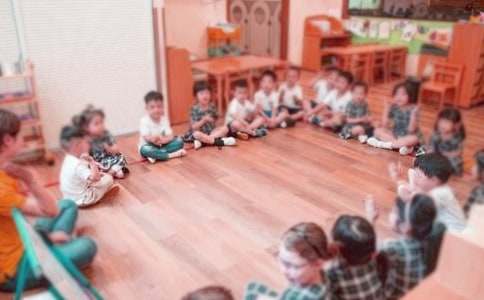定語從句公開課教案
作為一位不辭辛勞的人民教師,往往需要進行教案編寫工作,借助教案可以恰當地選擇和運用教學方法,調動學生學習的積極性。寫教案需要注意哪些格式呢?以下是小編為大家整理的定語從句公開課教案,僅供參考,歡迎大家閱讀。

Teaching Aims:(教學目的)
1、初步了解定語從句的概念、結構。
2、初步學習并掌握定語從句的規則,尤其是關系代詞『who,which,that以及whose』的用法。
Teaching Points:(教學重點)
1.定語從句三要素及關系詞的選用
2.只能that或which的情況;
Teaching Methods:(教學方法)
1、舉例講解,說明定語從句的用法。
2、以講練結合的方法加深學生印象。
Teaching Steps:(教學步驟)
Step1.導入
一、定語及定語從句的概念:
a beautiful girl a handsome boy a clever child
1、 定語是用來修飾名次或代詞的。
This is the boy who is clever.
2、定語從句(Attributive Clauses)定義:在主從復合句中修飾名詞或代詞的從句 定語從句的特點:
定語從句
的引導詞關系代詞where (地點狀語)關系副詞
when (時間狀語)
why (原因狀語)
Step2:詳細講解定語從句語法知識
1、who和whom指人,在從句中分別做主語和賓語,做賓語時可被省略。
the handsome
the tall
the strong boy The boy is Tom.
the clever
the naughty
The boy is Tom.
2、which指物,在從句中做主語或賓語,做賓語時可被省略。
3、that既可指人也可指物,在從句中做主語或賓語,做賓語時可被省略。
4、whose作定語,用來表示先行詞和從句主語之間的所屬關系。
Step3 定語從句考查重點:
定語從句在下列情況下只能用that,而不能用which指物。(指人時可以用who/whom)
1. 當先行詞被形容詞最高級修飾時。如:
2. 當先行詞是不定代詞everything, anything, nothing (something 除外), all, none, few, little, some等代詞時,或當先行詞受every, any, all, some, no, little, few, much等代詞修飾時。如:
3. 當先行詞被序數詞修飾時。如:
4. 當先行詞被表示“正是”的the very, the only修飾時。如:
5. 當先行詞前面有who, which等疑問代詞時。如:
6. 當先行詞為人與動物或人與物時。如:
Step 4 Summary:(小結) 注意 關系詞的實質:
Step 5 Practices(homework):
Part 1.結合課文例句,找出先行詞和關系詞
1. But the one million people of the city, who thought little of these events, went to bed as usual that nigh.
2. It was heard in Beijing, which is one hundred kilometers away.
3. A huge crack that was eight kilometers long and thirty metres wide cut across houses, roads and canals.
4. The number of people who were killed or injured reached more than 400,000.
5. The army organized teams to dig out those who were trapped and to bury the dead.
6. Workers built shelters for survivors whose homes had been destroyed.
Part2 名言名句欣賞
1. He laughs best who laughs last.
2. He who makes no mistakes makes nothing.
3. He that gains time gains all things.
4. He who nothing questions, nothing learns.
5. He that cannot ask cannot live.
6. A friend is someone who knows all about you and still loves you.
7. God helps those who help themselves.
8. He who does not reach the Great Wall is not a true man
9. He who does not advance loses ground.
Part3 practice
1. Do you know the girl _____ is talking with your mother?
A. who B. which C. whose D. /
2. This is the kite _______ Billy Fisher gave to Tom
A. who B. which C. / D. Both B and C
3. He was the only one ______ was saved in the earthquake.
A. who B. that C. which D. A and B
4. This is the only present _____ I like.
A. who B. that C. which D. B and C
5. This is the most beautiful place ______ I have ever seen.
A. which B. who C. where D. /
6. All _______ I can do is to give him some money.
A. that B. which C. who D. what
7. Is there anything else _____ you need?
A. which B. that C. who D. what
8. The museum _____ we visited last week isn’t far from here.
A. where B. which C. what D. who
9. Most of the people ____ lost their lives in the earthquake are Sichuan natives.
A. when B. who C. how D. which
10. The boy ____ you saw just now is Tom’s brother.
A. which B. whose C. when D. /
11. The bike and its rider _____ had run over an old woman were helped up by the policeman.
A. which B. that C. it D. whom
12. Is this the factory _____ you worked five years ago?
A. in which B. in where C. in that D. that
二、用適當的關系代詞填空
1. Do you like the present _______ I bought you yesterday?
2. The storybook _______ was written by his uncle is quite interesting.
3. The boy _______ computer doesn’t work well needs your help.
4. This is the best movie _______ we have seen this year.
5. The doctor _______ we met in the street is from America.
6. The passengers and the suitcases _____ were in the waiting room had to wait for another plane.
7. Who is the girl _______ you want to make friends with?
8. This is the last lesson _______ Mr. Smith taught us.
9. I, _____ am your friend, will help you out.
10. The building ___________ wall is white is my uncle’s house.
11. The boy _______ John spoke with is my brother.
12. Will you please lend me the very picture _________ you bought yesterday?
13. The students ________ the teacher praised at the class meeting is our monitor.
14. The season _________ comes after spring is summer.
15. This is the first museum __________ we visited last Saturday.
16. The girl ________ leg was broken in the earthquake was taken to the hospital.
17. I found some photos of interesting places _________ were not far away from our city.
18. There is a boy downstairs _________ want to see you.
19. The river ________ banks are covered with trees is very long.
20. I’m going to meet Tom ______ they say is a good boy.
定語從句公開課教案 篇2一、所需課件:一課時
學習內容:定語從句中關系代詞who, whom ,which ,that ,as的用法。
定語從句是一個很重要的語法項目,為以后的英語學習打下堅定的基礎,也是初高考出現頻率較高的考點。
二.教學目標分析
知識與目標分析
知識與技能目標:幫助學生掌握關系代詞who, whom, which, that, as 的用法,豐富學生的語法知識,形成獨立的學習能力,能夠運用這些知識去解決定語從句的習題。
過程與方法目標:讓學生主動參與感知——積累——理解關系代詞的過程,讓學生學會關系代詞的用法,學會探究解決問題。
情感態度價值觀目標:讓學生體驗到學習定語從句的樂趣。
三.學習者特征分析
初中生剛剛接觸與從句,對句子結構認識不夠清楚,但是這部分內容很重要,有助于學生完善整個英語語法知識結構。
四.教學策略選擇與設計
本課題主要采用啟發式教學策略,合作學習,探究學習的策略,在教學中,創設問題情景,以小組為單位進行討論,合作學習,得出結論。
五.教學資源與工具設計
多媒體教室 計算機 PPT課件
六、教學過程
第一步:復習(檢查作業)
第二步:導入
Marry is a beautiful girl.
Marry is a girl who has long hair.
……(討論句子特征 )
老師總結:什么是定語從句,先行詞,引出定語從句由關系代詞,關系副詞來引導。
第三步:介紹引導定語從句的關系代詞。
第四步:詳細介紹這些關系代詞的用法。
第五步:習題(加深印象)
第六步:課后總結
第七步:布置作業
七、教學評價設計
創建量規,向學生展示他們將被如何評價(來自教師和小組其他成員的評價)。另外,可以創建一個自我評價表,這樣學生可以用它對自己的學習進行評價。
八、幫助和總結
教師以啟發誘導的方式向學生提供幫助和指導,針對不同的'學習間斷的學生采取不同的幫助和指導,之處不同水平的要求,給予不同的幫助。對于學習能力強的可以以暗示的方式進行指示,對學習能力差的學生可以通過逐步深入的方式進行討論。
在學習結束后,對學生的學習做出簡單的總結,可以布置一些練習題,以強化學習效果。
【拓展內容】
定語從句關系分類
關系從句有限制性關系從句(英語:restrictive relative clause或defining relative clause)和非限制性關系從句(英語:non-restrictive relative clause)之分。限制性關系從句起限定作用,修飾特定的.名詞或名詞短語;而非限制性關系從句只起補充說明某種信息的作用。
例如:The government which promises to cut taxes will be popular.(限制性關系從句,指任何一個減稅的政府)
The government, which promises to cut taxes, will be popular. (非限制性關系從句,補充說明(現任的)政府的情況)
There were very few passengers who escaped without serious injury. (限制性關系從句,指逃出來的乘客大多受了傷)
There were very few passengers, who escaped without serious injury. (非限制性關系從句,指游客人數本來就很少,這些游客都逃了出來且沒有受傷)
限制性關系從句
從語義上看,限制性關系從句主要起限定作用,修飾特定的人或事物,如果去掉限制性定語從句,整個句子表意會不完整甚至不通順;從結構上看,限制性關系從句常緊跟先行詞,并且同先行詞之間一般不加逗號分隔(但不是絕對的)。
限制性關系從句的關系詞包括:that, which, who, whom, whose, as, than等。
非限制性關系從句
從語義上看,非限制性關系從句主要起補充說明的作用,有時相當于一個并列分句或狀語從句,可以表達原因、目的、結果、條件、讓步等意義。
例如:Dr Lee, who had read through the instructions carefully before doing his experiments, did not obtain satisfactory results. (非限制性關系從句表示讓步的意義,相當于though Dr Lee had read through the instructions...)
非限制性定語從句的關系詞包括:which, who, whom, whose, as等,另外that在非限制性關系從句中并非絕對不可使用。
關系選擇
關系詞包括關系代詞(英語:relative pronoun)、關系副詞(英語:relative adverb)和關系限定詞(英語:relative determiner)。關系詞的選擇主要涉及以下因素:
1.先行詞是人還是事物;
2.關系詞在關系從句中的句法功能;
3.關系從句是限制性的還是非限制性的;
4.是口語還是書面語。
特殊的關系從句
名詞性關系從句
名詞性關系從句(英語:nominal relative clause)又叫自由關系從句(英語:free relative clause),名詞性關系從句在結構上不含有先行詞,它的關系詞同時扮演了關系詞和先行詞的角色,因此名詞性關系從句的關系詞又叫縮合連接代詞。例如:
I like what I see.(“what I see”是名詞性關系從句,它沒有先行詞,與此同時縮合連接代詞“what”又直接充當了“like”的賓語。)
縮合連接代詞“what”可以根據語義解釋為“the thing(s) that”或“the person(s) that”。
嵌入式關系從句
嵌入式關系從句(英語:embedded relative clause)是一種較復雜的關系從句,它既是先行詞的后置定語,又是另一結構的賓語。
例如:She has an adopted childwhoshe says was an orphan. (關系從句修飾“an adopted child",同時又是“she says”的賓語)
雙重關系從句
雙重關系從句(英語:double relative clause)是指兩個關系從句修飾同一個先行詞的語法現象。
例如:You can easily find us;just look for a housewhosewindows need washing andwhosefence needs repairing!
这里有更多你想看的|
|
- 上一篇:學生宿舍生活輔導員工作崗位職責(通用15篇)
- 下一篇:返回列表






